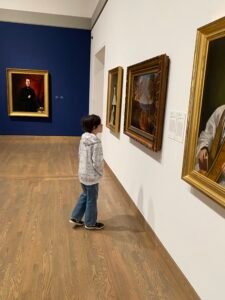
Museums and art galleries are designed to be spaces of inclusion, learning, and inspiration for all, with a strong focus on accessibility. However, many individuals with disabilities still face significant barriers to fully engaging with exhibits. Visitors with visual, hearing, cognitive, or mobility impairments encounter obstacles that prevent them from enjoying the full experience. As society becomes more aware of the importance of inclusivity, it’s essential for cultural institutions to take actionable steps to remove these barriers and ensure equal access for everyone.
The Struggles Disabled Visitors Face
Visual Impairments
For individuals with low vision or blindness, museums can often feel like a maze of inaccessible content. Traditional written descriptions of artwork are often hard to read, and without alternative formats, many miss out on valuable context and meaning.
Hearing Impairments
Visitors who are deaf or hard of hearing frequently struggle with a lack of visual or captioned content. Although many museums provide audio guides, the absence of captions or sign language interpretation means they miss out on key information.
Cognitive Disabilities
Exhibits often require specific levels of understanding and interaction, which can be challenging for individuals with cognitive disabilities. Complex language, lack of simplified explanations, and missing interactive features make it difficult for them to engage fully with exhibits.
Mobility Impairments
While many museums are physically accessible, navigating the exhibits can still present challenges for visitors with mobility impairments. Displays that are hard to reach and the lack of interactive content at various heights limit their engagement with the exhibits.
Lack of Customizable Options
A significant issue is that most museums still do not offer customizable experiences for visitors with disabilities. Without the ability to tailor content, many are left frustrated and disengaged.
How My System Can Help with Accessibility
We specialize in creating accessible, inclusive spaces for museums and art galleries using NFC technology and ADA-compliant websites(www.wcag.com). Our system breaks down barriers for visitors with disabilities, empowering them to engage with exhibits at their own pace and according to their specific needs.
Accessible Content with NFC Tags
Our NFC tags enable seamless interaction. Visitors can tap their smartphones to access detailed descriptions, audio guides, videos, and more. Whether it’s text-to-speech or audio descriptions, visually impaired visitors will be able to explore exhibits fully without barriers.
Personalized Experiences for All Disabilities
Our NFC system supports a wide range of disabilities. Visitors with hearing impairments are able to access sign language videos, captions, and other text-based resources. Those with cognitive disabilities benefit from simplified descriptions and interactive elements tailored to their needs.
Customizable Accessibility Features
Our system integrates with ADA-compliant websites, offering features like text resizing, high-contrast modes, and language translation options. Visitors can easily adjust their experience, whether they need larger text, better contrast, or access to content in different languages.
Seamless Integration
Our system integrates smoothly with your existing exhibits. NFC tags are placed at accessible points in the museum, ensuring easy interaction without disrupting the space’s aesthetic or functionality.
Why It Matters
Investing in accessible solutions is essential for museums and galleries striving to serve all visitors. By addressing the specific needs of visitors with disabilities, you create truly inclusive environments. This not only ensures ADA compliance but also expands your audience, enhances engagement, and fosters a deeper connection to art and culture.
At CANUS Museum Consulting, we are committed to helping museums and galleries create accessible, enriching spaces. Our NFC technology ensures that visitors with disabilities are fully immersed in the museum experience. Let us help make your institution a model of inclusivity. Reach out today to learn how we can enhance your museum’s accessibility: museum-consultant.com.